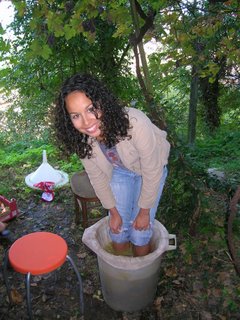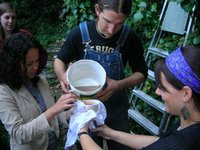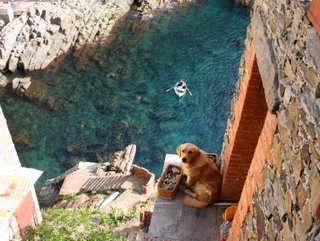 “Founding libraries is like once again building public granaries, amassing reserves against a winter of the spirit which from many reports, my own included, I see coming.”
“Founding libraries is like once again building public granaries, amassing reserves against a winter of the spirit which from many reports, my own included, I see coming.”
– Marguerite Yourcenar, Memorie di Adriano
A library is a special place, a room that holds centuries’ worth of knowledge – beauty of many literary traditions, the copious annals of history and the fruits of intellectual and moral progress. Lest we forget, it’s also a quiet place to read, reflect and put our thoughts together in an orderly, logical manner.
The Umbra Institute is proud of its library, and rightly so, we say. Started over five years ago in the corner of a classroom with just a few dozen books, it now occupies two large central rooms in the Palazzo Danzetta, Umbra’s newest building in the historic center of Perugia on Via Mazzini.
The collection has a wide range of titles, from art history to the latest texts in international business practices. The Umbra library’s latest and most beautiful acquisitions, however, are the complete Codex Atlanticus and Codex Madrid, two extremely rare collections of many of Leonardo da Vinci’s notebooks, including drawings, sketches and writings on a wide range of subjects all in da Vinci’s characteristic reverse handwriting. The Codex also feature modernized transcriptions of the texts and commentaries which will help students to benefit from da Vinci’s extraordinary intellect.
“Experentiae docet”, learning from experience, as the Umbra logo says. In Via Mazzini, Umbra students from all over the US and Italy learn from experiencing the best writers the world has to offer.




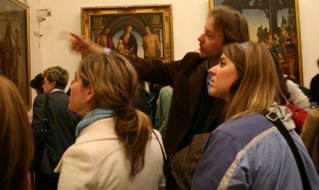



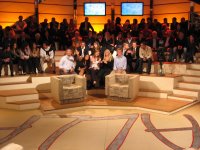
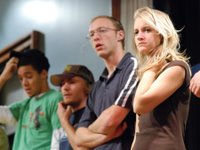 However many of these former students are finding ways to continue the Italian experience from home. Dan Bower hosted his first meeting at Northeastern University for an Italian Club, joining Italian exchange students and Americans in one cultural organization.
However many of these former students are finding ways to continue the Italian experience from home. Dan Bower hosted his first meeting at Northeastern University for an Italian Club, joining Italian exchange students and Americans in one cultural organization. 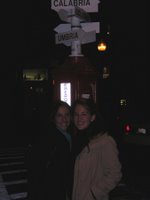 Bree Barton performed with the Human Beings International Theater Group in Perugia – now she takes a lead role in an improv group at Amherst College (in photo, right).
Bree Barton performed with the Human Beings International Theater Group in Perugia – now she takes a lead role in an improv group at Amherst College (in photo, right). 